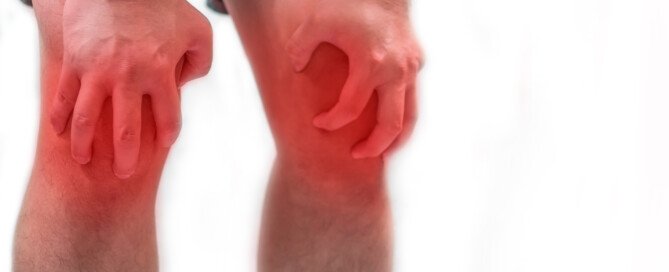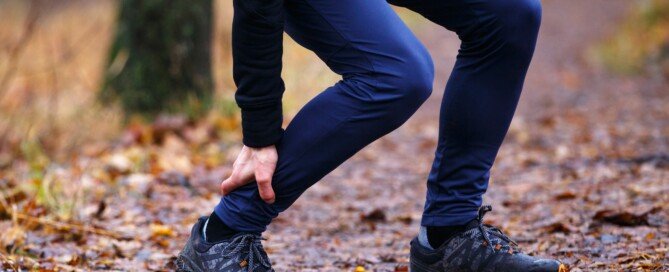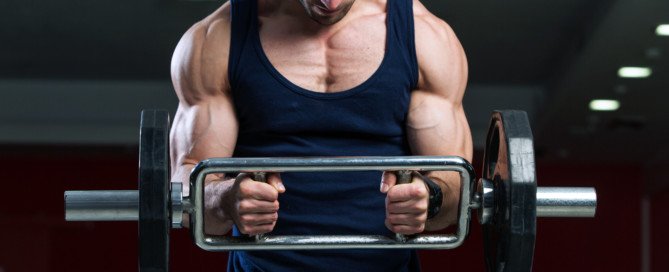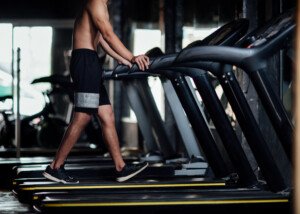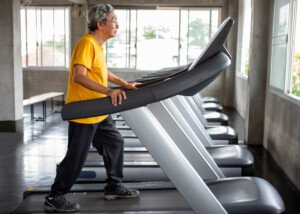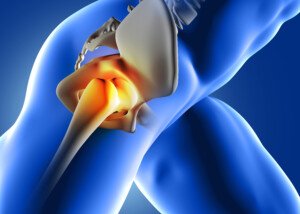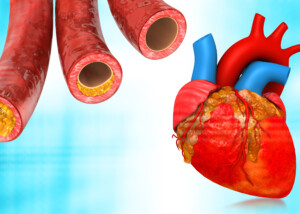Does Knee Bursitis Always Cause Swelling?
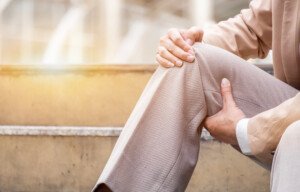
You may be aware that bursitis of the knee can cause swelling, but is this necessarily so in every single case?
“Knee bursitis may or may not result in visible or even palpable swelling,” says Devin B. Peck, MD, owner of Austin Interventional Pain in Austin, TX.
Palpable refers to detecting the swelling by feeling with your fingers, whether or not you can visually detect it.
Dr. Peck adds, “The more superficial bursae [plural of bursa], such as the prepatellar, superficial infrapatellar or pes anserine bursae, are more likely to lead to swelling that can be seen without MRI or CT scan.”
Another condition of the knee, chondromalacia patella (sometimes referred to as patellofemoral syndrome) may produce symptoms that make a person wonder if indeed the problem is actually bursitis.
The symptoms have some overlap, and chondromalacia of the patella does not cause swelling – just like sometimes, bursitis won’t cause swelling.
What to Do if Your Knee Starts Swelling
• Rest and Avoid Strain: Limit activities that put pressure on the knee to prevent aggravating the swelling.
Avoid walking long distances or engaging in strenuous activities that can worsen the condition.
• Apply Ice: Use an ice pack wrapped in a cloth and apply it to the swollen area for 15-20 minutes every 2-3 hours during the first 48 hours. This can help reduce inflammation and numb the pain.
• Elevate the Knee: Keep the affected knee elevated above heart level as much as possible. This helps reduce fluid buildup and encourages proper blood flow.
• Compression: Use an elastic bandage or knee brace to provide gentle compression.
This can help control swelling and provide support. Ensure the bandage isn’t too tight, as it could impede circulation.
• Over-the-Counter Medications: Nonsteroidal anti-inflammatory drugs (NSAIDs), like ibuprofen or naproxen, can help reduce pain and swelling.
Follow the dosage instructions on the label and consult with a healthcare provider if you have any health conditions or are taking other medications.
• Seek Medical Attention: If swelling persists for more than a few days, is severe, or is accompanied by other symptoms such as significant pain, difficulty moving the knee, or a fever, seek medical evaluation.
Persistent or severe swelling might indicate an underlying injury, infection, or chronic condition that needs professional assessment and treatment.
• Gentle Exercises and Stretching: Once the initial swelling decreases, gentle range-of-motion exercises and stretching can help restore flexibility and strength.
Consult a healthcare provider or physical therapist for appropriate exercises that won’t aggravate the condition.
 Dr. Peck’s areas of interest include chronic and acute musculoskeletal pain, sports injuries, arthritis and cancer pain, among many others. Austin Interventional Pain was established in 2019.
Dr. Peck’s areas of interest include chronic and acute musculoskeletal pain, sports injuries, arthritis and cancer pain, among many others. Austin Interventional Pain was established in 2019.
 Lorra Garrick has been covering medical, fitness and cybersecurity topics for many years, having written thousands of articles for print magazines and websites, including as a ghostwriter. She’s also a former ACE-certified personal trainer.
Lorra Garrick has been covering medical, fitness and cybersecurity topics for many years, having written thousands of articles for print magazines and websites, including as a ghostwriter. She’s also a former ACE-certified personal trainer.
.
Top image: Shutterstock/DeepMeaning
Crunching Sound from Knees: Causes, Solutions
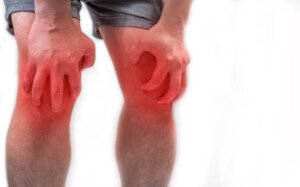
“Crunching sound in the knee is referred to by physicians as crepitus,” says Devin B. Peck, MD, owner of Austin Interventional Pain in Austin, TX.
What causes a crunching sound in the knees?
Dr. Peck explains, “It is typically caused by the rubbing of cartilage on the joint surface or other soft tissues around the knee during joint movement.
“When crepitus is painful, it may represent the sliding of an irregular, damaged or degenerated ligament.
“It can also indicate damage or irregularity in one of the menisci (plural of meniscus), the pads of cartilage which cushion the inner and outer aspects of the knee joint.”
If the crunching sound in your knee or both of them is not accompanied by any discomfort, there is no reason to be concerned. Dr. Peck says, “Benign, painless crepitus is common and requires no treatment.
“However, painful crepitus can indicate degenerative arthritis, inflammatory arthritis (like rheumatoid arthritis) or an injury to one of the ligaments or menisci.”
Solutions
“Treatment will depend on the cause, but may include physical therapy, anti-inflammatory medications, injections or surgery.”
Which means, if you’re seeking solutions to a crunching noise in one or both knees that is also accompanied by pain or even a feeling of instability, it’s time to see a doctor to find out exactly what is wrong.
 Dr. Peck’s areas of interest include chronic and acute musculoskeletal pain, sports injuries, arthritis and cancer pain, among many others. Austin Interventional Pain was established in 2019.
Dr. Peck’s areas of interest include chronic and acute musculoskeletal pain, sports injuries, arthritis and cancer pain, among many others. Austin Interventional Pain was established in 2019.
 Lorra Garrick has been covering medical, fitness and cybersecurity topics for many years, having written thousands of articles for print magazines and websites, including as a ghostwriter. She’s also a former ACE-certified personal trainer.
Lorra Garrick has been covering medical, fitness and cybersecurity topics for many years, having written thousands of articles for print magazines and websites, including as a ghostwriter. She’s also a former ACE-certified personal trainer.
.
Top image: Shutterstock/thebigland
Can Knee Bursitis Cause Pain ONLY when Kneeling?
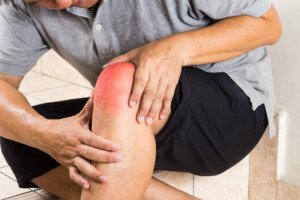
Is that knee pain you get only when kneeling possibly caused by bursitis in this joint?
“Infrapatellar bursitis can lead to pain while kneeling,” says Devin B. Peck, MD, owner of Austin Interventional Pain in Austin, TX.
Dr. Peck explains, “In fact, superficial infrapatellar bursitis is commonly known as ‘clergyman’s knee’ or ‘plumber’s knee,’ a reference to kneeling.
“Prepatellar bursitis can also lead to pain with kneeling, although it can also result in non-painful swelling over the kneecap. Prepatellar bursitis is sometimes known as housemaid’s knee.’”
Be aware that another condition, unrelated to bursitis, can cause pain in the knee only when kneeling.
It’s called chondromalacia patella or patellofemoral syndrome.
However, this condition usually also causes discomfort when going up stairs, running, jogging and/or sometimes jumping.
The discomfort may be a strong or dull ache and/or a sensation of fullness or tightness under the kneecap.
 Dr. Peck’s areas of interest include chronic and acute musculoskeletal pain, sports injuries, arthritis and cancer pain, among many others. Austin Interventional Pain was established in 2019.
Dr. Peck’s areas of interest include chronic and acute musculoskeletal pain, sports injuries, arthritis and cancer pain, among many others. Austin Interventional Pain was established in 2019.
 Lorra Garrick has been covering medical, fitness and cybersecurity topics for many years, having written thousands of articles for print magazines and websites, including as a ghostwriter. She’s also a former ACE-certified personal trainer.
Lorra Garrick has been covering medical, fitness and cybersecurity topics for many years, having written thousands of articles for print magazines and websites, including as a ghostwriter. She’s also a former ACE-certified personal trainer.
.
Top image: Shutterstock/ThamKC
Wrist Pain While Lifting Weights: Causes, Solutions

A doctor provides causes and solutions to wrist pain while weightlifting.
What are the possible causes of wrist pain that is brought on during a weightlifting set?
“This can often be related to De Quervain’s tenosynovitis,” begins Asim S. Aijaz, MD, a board certified pain management specialist with Advanced Pain Care in Texas.
Dr. Aijaz continues, “This is pain along the radial (thumb) aspect of the wrist. While the exact cause is unknown, repetitive wrist movements can make it worse.
“It is often seen in new mothers who are lifting their babies repetitively. In weightlifting, hammer curls can reproduce this movement and can potentially aggravate the symptoms.”
When your wrists hurt during lifting weights, the tissue that’s involved usually relates to the tendons, as it does with De Quervain’s tenosynovitis, “but it may also be a problem in the joint such as with arthritis, or in the bone if there is a small fracture (more likely with impact exercises such as boxing or punching a heavy bag),” says Dr. Aijaz.
So which exercises should a person with wrist pain avoid doing?
Dr. Aijaz explains, “Hammer curls. Do supinated curls to relieve some of the stress along the radial aspect of the wrists.”
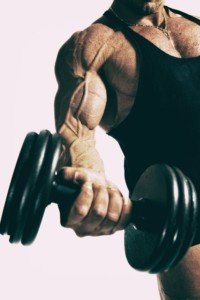
Supinated means palms facing forward when your arms are straight, and as you bring the dumbbells or barbell up, your palms are facing towards you.
Dr. Aijaz adds, “Avoid impact exercises. If doing burpees, make sure you are using proper form with the pushup part of the exercise and that you’re not hitting the ground too aggressively as you are approaching the pushup position of the exercise.
“Listen to your body, if you notice a certain repetitive exercise aggravates the pain, avoid it.”
What exercises can you do?
“If your pain persists you may benefit from having somebody evaluate your form to make sure you are not putting unnecessary stress on your wrists with common exercises such as pushups, bench press, curls,” says Dr. Aijaz.
“Sometimes it’s just a matter of proper hand positioning to reduce the stress: spreading out your fingers to distribute weight through your fingertips during pushups for example.”
If you’ve developed wrist pain in the course of your weightlifting regimen, ask yourself if this pain began after you one day decided to try an E-Z curl bar for biceps curls.
Though these bars are designed to reduce wrist strain, they can actually strain the wrists in someone who’s used to doing curls with a straight bar.
So if this describes you, abandon the E-Z curl bar and go back to the straight bar.
“Generally if the pain is related to a tendon issue or arthritis, one may find it beneficial to reduce the weight and adjust the form or take a break from exercises which stress the wrists,” says Dr. Aijaz.
“During your break from these exercises, you may find relief with ice and anti-inflammatories.
“As you’re getting back into your workout, you may consider wearing a wrist support and see if this helps in preventing the pain from returning.”
Carpal Tunnel Syndrome
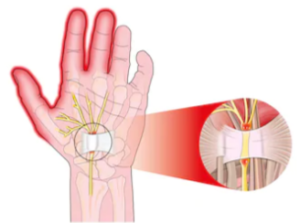
Shutterstock/Alexonline
“Occasionally patients with carpal tunnel syndrome will complain of hand and wrist pain that is exacerbated with weightlifting,” says Jonathan Oheb, MD, North Valley Orthopedic Institute, Chief of Orthopedic Hand and Upper Extremity Surgery.
 Dr. Aijaz has been involved with the Texas Pain Society, Spine Injection Society and the American Society for Interventional Pain Physicians.
Dr. Aijaz has been involved with the Texas Pain Society, Spine Injection Society and the American Society for Interventional Pain Physicians.
 In addition to hand, elbow and shoulder care, Dr. Oheb provides comprehensive surgical and nonsurgical treatment for all orthopedic conditions of the hip, knee and ankle, including broken bones and injuries. jonathanohebmd.com
In addition to hand, elbow and shoulder care, Dr. Oheb provides comprehensive surgical and nonsurgical treatment for all orthopedic conditions of the hip, knee and ankle, including broken bones and injuries. jonathanohebmd.com
 Lorra Garrick is a former personal trainer certified through the American Council on Exercise. At Bally Total Fitness she trained women and men of all ages for fat loss, muscle building, fitness and improved health.
Lorra Garrick is a former personal trainer certified through the American Council on Exercise. At Bally Total Fitness she trained women and men of all ages for fat loss, muscle building, fitness and improved health.
.
Top image: Shutterstock/ruigsantos
Stabbing Shooting Pain in Achilles Tendon: Causes, Solutions
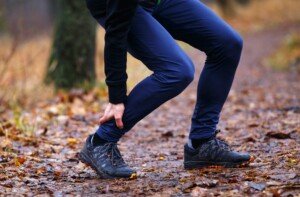
A doctor explains why your Achilles tendon has shooting, stabbing pain and what can be done to remedy this situation.
“Pain here is generally the result of tendonitis or inflammation of the Achilles tendon,” says Asim S. Aijaz, MD, a board certified pain management specialist with Advanced Pain Care in Texas.
He continues, “You can also develop tears in the tendon which would also cause tendonitis and pain.”
So how does this situation arise in the first place?
Dr. Aijaz explains, “As with tendonitis in other parts of the body, this is often related to repetitive use or over-exertion, causing tears or degenerative changes in the tendon.
“Bone spurs at the heel can also cause small tears in the fibers, causing Achilles tendon pain.
“Tight calf muscles can also result in increased stress on the Achilles tendon.”
Solutions
“Rest, ice, anti-inflammatories, appropriate stretching (generally the calf muscles) and appropriate shoes,” says Dr. Aijaz.
“If symptoms persist, physical therapy can be very helpful.”
Also keep yourself well-hydrated, as tendons don’t get a lot of water because they are not densely vascular.
 Dr. Aijaz has been involved with the Texas Pain Society, Spine Injection Society and the American Society for Interventional Pain Physicians.
Dr. Aijaz has been involved with the Texas Pain Society, Spine Injection Society and the American Society for Interventional Pain Physicians.
 Lorra Garrick has been covering medical, fitness and cybersecurity topics for many years, having written thousands of articles for print magazines and websites, including as a ghostwriter. She’s also a former ACE-certified personal trainer.
Lorra Garrick has been covering medical, fitness and cybersecurity topics for many years, having written thousands of articles for print magazines and websites, including as a ghostwriter. She’s also a former ACE-certified personal trainer.
.
Top image: Shutterstock/Skumer
Red Swollen Feet after Running: Prevention
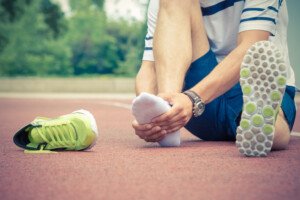
Here’s what a doctor says you can do to help prevent swollen, red feet after your running session.
“Make sure you have good shoes,” begins Asim S. Aijaz, MD, a board certified pain management specialist with Advanced Pain Care in Texas.
“Just because your shoes look beautiful and new doesn’t mean they’re still doing their job.
“The padding in shoes does wear out, and this padding is very important in helping to absorb the shock to your feet, knees, hips and back.
“A common recommendation to help avoid such overuse injuries is to increase your intensity or distance gradually, some say by roughly 10 percent per week.
“It’s also recommended to take breaks and rest one to two days per week to avoid overuse injuries.”
If after making these changes, you still suffer from swollen and red feet after your running workout, then this might be related to improper running mechanics.
And how can a person run “wrong”? One example is that of holding onto a treadmill.
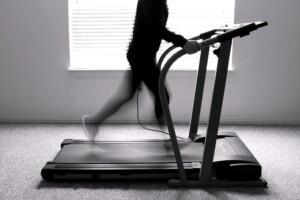
Larry D. Moore
If you run on a treadmill, do not hold on other than for a momentary balance check or to change the setting.
Otherwise, sustained clinging warps natural spinal alignment and messes up the gait pattern, right down to the feet.
If you can’t keep up with the tread without holding on, then use a slower speed.
 Dr. Aijaz has been involved with the Texas Pain Society, Spine Injection Society and the American Society for Interventional Pain Physicians.
Dr. Aijaz has been involved with the Texas Pain Society, Spine Injection Society and the American Society for Interventional Pain Physicians.
 Lorra Garrick has been covering medical, fitness and cybersecurity topics for many years, having written thousands of articles for print magazines and websites, including as a ghostwriter. She’s also a former ACE-certified personal trainer.
Lorra Garrick has been covering medical, fitness and cybersecurity topics for many years, having written thousands of articles for print magazines and websites, including as a ghostwriter. She’s also a former ACE-certified personal trainer.
.
Top image: Shutterstock/zoff
Electric Shock Feeling in Arms from Weightlifting: Causes
Stop wondering; HERE is what a doctor says causes an electric shock feeling in your arms when you lift weights.
“Feelings of electric shocks are often related to nerve irritation,” says Asim S. Aijaz, MD, a board certified pain management specialist with Advanced Pain Care in Texas.
“This could be secondary to the nerves being irritated in the neck where they leave the spine (cervical spine nerve roots) or at some point beyond that as the nerves course through the arms,” continues Dr. Aijaz.
“Other vulnerable areas include the shoulders, elbows and wrists.”
Solutions?
Dr. Aijaz explains, “Make sure you have proper technique when you are exercising. If a particular exercise causes this pain, avoid that exercise.”
You may also want to try a different piece of equipment for the same joint motion.
For example, if you’ve been suffering from electric shock sensations in your arms whenever you do preacher curls, then try standing barbell curls in which your arms and elbows are not pressing into a surface.
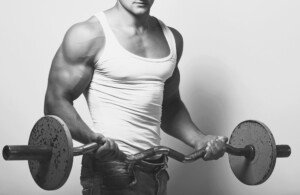
Freepik.com, Racool_studio
But if the symptom persists even if you’re not pressing a muscle group or limb into a surface, then avoid that exercise for awhile.
Dr. Aijaz adds, “If you believe in the idea of ‘No pain, no gain,’ you should reconsider this philosophy when it comes to pains which feel like electric shocks.
“Nerves are very slow to heal when injured. If this electric shock sensation persists, you should see your doctor.”
 Dr. Aijaz has been involved with the Texas Pain Society, Spine Injection Society and the American Society for Interventional Pain Physicians.
Dr. Aijaz has been involved with the Texas Pain Society, Spine Injection Society and the American Society for Interventional Pain Physicians.
 Lorra Garrick is a former personal trainer certified by the American Council on Exercise. At Bally Total Fitness she trained clients of all ages for fat loss, muscle building, fitness and improved health.
Lorra Garrick is a former personal trainer certified by the American Council on Exercise. At Bally Total Fitness she trained clients of all ages for fat loss, muscle building, fitness and improved health.
.
Top image: Shutterstock/Luka Funduk
Ankle Pain with Brisk Walking on Treadmill: Causes, Solutions
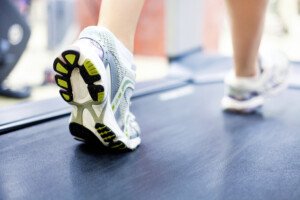
“Walking on a treadmill can lead to a sort of repetitive movement related pain” in the ankles, says Asim S. Aijaz, MD, a board certified pain management specialist with Advanced Pain Care in Texas.
“While on a treadmill, you are walking a smooth, unchanging surface, so you are constantly engaging the same muscles over and over again,” continues Dr. Aijaz.
“Compare this to walking on a trail or grass where the surface changes a small amount with each step.
“In this setting you are distributing the work a little more evenly over more muscles.”
Another possible cause of ankle pain while briskly walking on a treadmill is improper footwear. “Always make sure you have great shoes,” says Dr. Aijaz.
“Even if your shoes look beautiful and new, the padding can wear out. Your shoes do more than just make your feet look fresh in the gym; they absorb the shock that would otherwise be hitting your feet, ankles, knees, hips and back.
“Making a trip to a dedicated shoe shop can help in determining what footwear may be best for you.”
Finally, we can’t rule out the possibility that, if you have the habit of holding onto a treadmill while walking, this is responsible for pain in your ankles.
And here is why: Holding on disrupts the natural gait pattern. The faster you walk when holding on, the more unnaturally your foot strikes the tread surface.
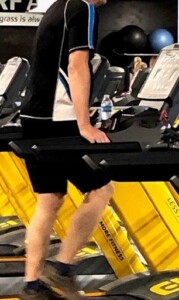
I’ve seen people gripping the front bar at fast speeds while walking, and their feet smack down hard with each step.
Holding onto a treadmill while walking, especially briskly, skewers the kinetic chain—the way the body is supposed to move naturally, right down to the feet.
Holding onto the side rails is no better than holding onto the front of the machine.
So instead, release your hands, swing your arms naturally, straighten your spine, and just walk.
Use a slower speed or lower incline if you get dizzy or fear falling off. Your body will quickly adjust.
Holding on has taught you to become quite dependent on assistance while walking.
If you still have pain in the ankles, then re-evaluate your footwear and the fact that when you use a treadmill, the walking surface never changes and is hard.
You may want to consider walking outdoors on an earthen trail.
 Dr. Aijaz has been involved with the Texas Pain Society, Spine Injection Society and the American Society for Interventional Pain Physicians.
Dr. Aijaz has been involved with the Texas Pain Society, Spine Injection Society and the American Society for Interventional Pain Physicians.
 Lorra Garrick has been covering medical, fitness and cybersecurity topics for many years, having written thousands of articles for print magazines and websites, including as a ghostwriter. She’s also a former ACE-certified personal trainer.
Lorra Garrick has been covering medical, fitness and cybersecurity topics for many years, having written thousands of articles for print magazines and websites, including as a ghostwriter. She’s also a former ACE-certified personal trainer.
.
Top image: Shutterstock/YanLev
Is Lots of Walking Okay Six Months after Hip Replacement?

Just how much walking can you do six months out from a total hip replacement surgery?
“Recovery following uncomplicated hip replacement is generally quite rapid,” says Devin B. Peck, MD, owner of Austin Interventional Pain.
“Important factors include the length of time between onset of hip pain and surgery, severity of pain and disability prior to surgery, and the specific type of hip replacement performed,” explains Dr. Peck.
“In most cases, formal PT should be continued for at least two months after surgery.
“After this, walking can be done as tolerated.
“Speed and duration of walking is limited only by each individual’s tolerance.
“Walking briskly or up or down hills is fine as long as the activity does not cause pain.”
Attention Treadmill Users
You may think that it’s a smart idea to hold onto the treadmill while walking because you had a hip replacement.
However, holding on skewers natural gait. In fact, the faster you walk on a treadmill while holding on in front, the more your hips will over-rotate to compensate for the lack of upper body movement, since holding on locks up the upper body.
Do not fear falling off a treadmill as long as you set the speed slowly and get used to a slow speed—while swinging your arms, moving your body naturally, the way nature designed it to move, with the upper body moving in coordination with the lower body.
Life off the treadmill means you walk all over the place without holding onto anything for support.
Thus, holding onto a treadmill while walking, even after hip replacement surgery, will not make you a more efficient, stronger walker once you step off the machine.
If you feel you’ll fall off if you don’t hold on, then either the speed is too fast and/or the incline is too high.
If your hip hurts while walking on a treadmill, then slow down (hands off) to see if that relieves the pain.
If it doesn’t, get off the machine. Try walking on a track or stable trail outdoors.
In summary, after you’ve completed all of your PT after a hip replacement surgery, you can walk as much as your body feels comfortable — go for it! Just don’t hold onto the treadmill.
 Dr. Peck’s areas of interest include chronic and acute musculoskeletal pain, sports injuries, arthritis and cancer pain, among many others. Austin Interventional Pain was established in 2019.
Dr. Peck’s areas of interest include chronic and acute musculoskeletal pain, sports injuries, arthritis and cancer pain, among many others. Austin Interventional Pain was established in 2019.
 Lorra Garrick has been covering medical, fitness and cybersecurity topics for many years, having written thousands of articles for print magazines and websites, including as a ghostwriter. She’s also a former ACE-certified personal trainer.
Lorra Garrick has been covering medical, fitness and cybersecurity topics for many years, having written thousands of articles for print magazines and websites, including as a ghostwriter. She’s also a former ACE-certified personal trainer.
.
Top image: Depositphotos.com
Calcium Score May Show Death Risk Even without Family History of Heart Disease
This study shows that even healthy people with no early family history of heart disease may want to get a calcium score test.
Have you had your coronary calcium score taken? This is a five minute procedure using a CT scanner.
You just lie there while the image is taken: about five minutes.
This procedure yields a numerical value that’s associated with the amount of hard (stable) plaque buildup that’s in your heart’s arteries.
A score of zero means that there is no detectable hard plaque buildup.
Calcium scoring does not show soft (unstable) plaque buildup. The soft plaque is unstable and may spontaneously break off, causing a clot in a coronary artery: a heart attack.
However, enough hard plaque can cause obstructive coronary artery disease, narrowing the interior of the arteries, leading to reduced blood flow in the heart.
Calcium Scoring Indicates Death Risk Even in People without Family History of Heart Disease
Emory University School of Medicine researchers analyzed coronary calcium scores taken from over 9,700 study subjects.
At the time these participants had their scans, none had signs of heart disease.
The calcium scores, say the researchers, were accurate in predicting all-cause mortality up to 15 years out in patients without symptoms.
Higher CAC Score = Higher All-Cause Mortality
“The presence of calcium in the coronary arteries is an early indicator of coronary artery disease,” says Carlos González Quesada, MD, FACC, attending cardiologist with Cedars-Sinai Medical Center and a cardiologist with Cardiovascular Medical Group of Southern California.
“Patients with coronary calcifications are known to be at increased risk of developing heart attacks and strokes.
“Physicians may consider starting low dose aspirin and lowering-cholesterol medications, such as statins, in patients with calcium in the coronary arteries.
“The most recent guidelines of the American College of Cardiology/American Heart Association (ACC/AHA) recommend performing a coronary calcium scan in patients who have a 10-20% risk of developing a cardiac event within the next 10 years.
“To determine the individual 10-year risk of a cardiac event, doctors enter the patient’s information into an online calculator or estimator (tools.acc.org/ASCVD-Risk-Estimator-Plus/#!/calculate/estimate).
“The information used by these calculators includes age, gender, race, blood pressure, the cholesterol and presence of risk factors such as diabetes, high blood pressure or smoking.
“Although family history of a cardiac event may not be present, patients may have other risk factors that would put them in the intermediate or high risk.
“If the patient is determined to have an intermediate risk, a coronary calcium scan would identify individuals who may benefit from primary prevention strategies such as aspirin and statins.
“In other words, a family history of heart disease is an important predictor of cardiovascular events — but is not the only one or the strongest one.
“For example, someone may not have family history of heart disease, but he or she may have elevated cholesterol, high blood pressure and history of smoking.
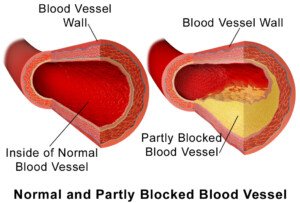
BruceBlaus
“A coronary scan may confirm the presence of early coronary artery disease.
“In the setting, the treating doctor may recommend starting aspirin and statin medication.”
 Dr. Quesada is board certified in internal medicine and cardiovascular diseases, with subspecialties in general cardiology plus interventional and structural cardiology. He evaluates and treats many conditions including shortness of breath, chest pain, coronary blockages and clot disorders. cvmg.com/carlos-quesada-md
Dr. Quesada is board certified in internal medicine and cardiovascular diseases, with subspecialties in general cardiology plus interventional and structural cardiology. He evaluates and treats many conditions including shortness of breath, chest pain, coronary blockages and clot disorders. cvmg.com/carlos-quesada-md
 Lorra Garrick has been covering medical, fitness and cybersecurity topics for many years, having written thousands of articles for print magazines and websites, including as a ghostwriter. She’s also a former ACE-certified personal trainer.
Lorra Garrick has been covering medical, fitness and cybersecurity topics for many years, having written thousands of articles for print magazines and websites, including as a ghostwriter. She’s also a former ACE-certified personal trainer.
.



